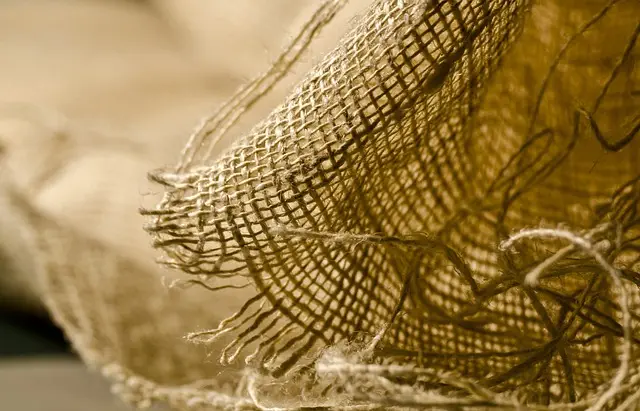Kratom, derived from the Mitragyna speciosa tree and traditionally used in Southeast Asia, has been recognized for its potential to relieve muscle soreness, particularly following intense physical activity. Its active alkaloids, mitragynine and 7-hydroxymitragynine, interact with opioid receptors, offering pain relief similar to conventional analgesics but as a natural alternative. The strains Maeng Da and Bali are popular for their distinct effects: Maeng Da is favored for its energizing properties and strong pain-relieving capabilities, while Bali is known for its calming and relaxing effects. Kratom is typically consumed in powder form and can be encapsulated or mixed with a beverage. While it holds promise as an adjunct to traditional treatments for managing chronic pain and post-exercise recovery, it's crucial to approach its use cautiously, considering personal health factors, potential drug interactions, and the varying legal statuses across different jurisdictions. Users are encouraged to consult healthcare professionals before incorporating kratom into their wellness routine, ensuring responsible consumption aligned with regulatory compliance for a safe and effective experience.
Muscle soreness can be a significant hurdle for individuals engaging in physical activity, from athletes to fitness enthusiasts. Exploring the realm of natural remedies, the African root known as kratom has emerged as a potential aid for those experiencing post-exercise discomfort. This article delves into the multifaceted benefits of kratom as a muscle soreness relief strategy. We will uncover how this ancient supplement can be integrated into modern wellness routines, examining the variety of kratom strains and their unique contributions to mitigating pain. Join us as we navigate the potential of kratom, a natural approach to addressing the challenges of muscle recovery.
- Unraveling the Potential of Kratom as a Muscle Soreness Alleviator: An Overview of the African Root's Benefits
- Exploring Kratom Varieties and Their Role in Mitigating Post-Exercise Pain
- Integrating Kratom into Your Wellness Routine for Effective Muscle Soreness Relief
Unraveling the Potential of Kratom as a Muscle Soreness Alleviator: An Overview of the African Root's Benefits

Kratom, an African root traditionally chewed to stimulate workers in its native Southeast Asia, has garnered attention for its potential therapeutic properties. Its active components, mitragynine and 7-hydroxymitragynine, may interact with the body’s opioid receptors, providing pain relief that could be beneficial for muscle soreness. Preliminary studies suggest that kratom might offer a natural alternative to manage discomfort associated with rigorous physical activities or chronic pain conditions. The alkaloids found within kratom leaves are believed to modulate the nervous system and release endorphins, which can help in alleviating pain and promoting a state of relaxation. As an adjunct to conventional treatment modalities, kratom has been explored for its analgesic effects, offering a promising avenue for those seeking alternative methods to manage muscle soreness. However, it is crucial to approach the use of kratom with caution, as its efficacy and safety are still under scientific scrutiny, and it should only be used under professional guidance or according to recommended dosages. Users considering kratom for muscle soreness relief should also be mindful of its potential interactions with other medications and its regulatory status in their region.
Exploring Kratom Varieties and Their Role in Mitigating Post-Exercise Pain

Kratom, an African root traditionally chewed to ward off fatigue and pain, has garnered attention in the realm of post-exercise recovery. This mitragyn speciosa derivative offers a natural approach to managing muscle soreness that often accompanies intense physical activity. The alkaloids found within kratom leaves are believed to interact with the body’s opioid receptors, potentially providing analgesic effects. Different strains of kratom, such as Maeng Da and Bali, have distinct alkaloid profiles which may influence their effectiveness in mitigating post-exercise pain. For instance, Maeng Da is known for its energizing properties and potent analgesic qualities, making it a popular choice among individuals seeking relief from muscle soreness after strenuous workouts. On the other hand, Bali kratom is often praised for its calming effects, which may aid in alleviating discomfort and promoting relaxation post-exercise. Users typically consume kratom in powder form, either by capsule or mixed with a beverage, allowing for personalized dosage to achieve the desired pain relief effect without overwhelming side effects commonly associated with traditional pain medication. As with any supplement, it is crucial to approach its use responsibly and consider individual sensitivities and local regulations regarding kratom consumption.
Integrating Kratom into Your Wellness Routine for Effective Muscle Soreness Relief

Integrating the African root, kratom, into your wellness routine can be a beneficial approach for managing muscle soreness. Kratom, derived from the Mitragyna speciosa tree, has been traditionally used in Southeast Asia for its potential therapeutic properties. When it comes to muscle relief, certain strains of kratom are believed to interact with the body’s opioid receptors, which can help alleviate pain associated with sore muscles. For those who engage in regular physical activity or have experienced muscle strain, incorporating kratom into your post-workout regimen may offer significant relief. It’s important to approach its use responsibly, adhering to recommended dosages and considering the timing of intake for optimal effects. Additionally, individuals should be aware of their local laws and regulations regarding kratom, as its legal status varies across different regions.
To effectively integrate kratom into your muscle soreness relief routine, it’s crucial to understand the different strains available and their distinct effects. The Maeng Da strain, for instance, is known for its stimulating properties, which can be beneficial for energy and focus, alongside pain relief. Meanwhile, Bali kratom is often praised for its calming and sedative-like qualities, which might aid in muscle relaxation and stress reduction. Whether you opt for capsules, powder, or leaves, it’s essential to maintain consistency in your use and monitor your body’s response. Consultation with a healthcare professional is also recommended, especially if you have underlying health conditions or are taking other medications. By carefully considering how kratom complements your lifestyle and wellness goals, you can harness its potential for effective muscle soreness relief.
Muscle soreness, particularly post-exercise, is a common challenge faced by many individuals engaging in physical activities. The article has explored the potential of kratom, an African root with traditional uses, as a natural alternative for muscle soreness relief. By examining various kratom strains and their individual effects, it’s clear that this supplement may offer a beneficial addition to one’s wellness routine. Users interested in incorporating kratom should approach its use with caution, adhering to recommended dosages and considering personal health conditions before integrating it into their regimen. While further research is warranted to fully understand the efficacy and optimal usage of kratom for muscle soreness, the evidence presented suggests that this African root could be a valuable natural remedy for those seeking relief from exercise-induced discomfort.






